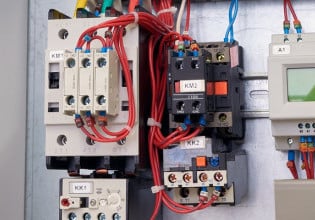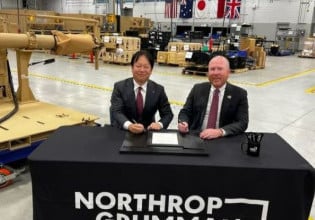How are Automation and IIoT Shaping Industry 4.0?
Learn about how the first several industrial revolutions have led manufacturers to develop and adopt smarter, more advanced technology. What does the future of Industry 4.0 look like?
The industry has been buzzing about the idea of the fourth industrial revolution for quite some time now. With continuing advances in automation and smart technology, there seem to be endless possibilities. Historians oftentimes refer to the industrial revolution as a single event that happened. However, that is not quite the case.
The industry we have today is built upon cumulative advancements and three large technology disruptions. Three common breakthrough technologies are:
- Steam engine
- Assembly line
- Computers
These three disruptive technologies created new waves of industrial advances that have improved technology, particularly in the industrial sector. These technologies are drastically different from the other advancements because they changed the face of the industrial landscape once they were widely adopted.
The epochs of the industrial revolution after steam engines, assembly lines, and computers are commonly referred to today as Industry 1.0, Industry 2.0, and Industry 3.0. As we’ve heard, the next wave of technology disruption in the industrial revolution is called industry 4.0.
What is Industry 4.0?
The use of computers in Industry 3.0 helped automate processes that resulted from Industry 2.0, otherwise known as assembly lines. The basic tenet of Industry 4.0 is catapulting automated industries to the future by making them smarter. More OEMs are aiming to make automated systems ‘smart’ by using massive quantities of data relayed over a low latency network.

Figure 1. Siemens Mindsphere application demonstrating its IIoT capabilities. Image used courtesy of Siemens
Industry 4.0 is an amalgamation of several things listed below.
Industrial Internet of Things (IIoT)
Machines in a factory form a network of sensors, devices, instruments, and computers to communicate with each other. This facilitates the free flow of data between devices over a network generally connected to the internet.
Preventive Maintenance
Regular maintenance is required for the longevity of machines. Preventive maintenance tries to predict a potential machine failure and repair the machine before the failure actually occurs.

Figure 2. A smart device utilizing IIoT capabilities to show predictive and preventive maintenance.
Big Data
With a massive number of machines that generate data and communicate with each other, useful insights can be drawn from huge data generated. Big data analytics use artificial intelligence (AI) and machine learning (ML) algorithms to extract information from data.
Low Latency Networks
If machines need to act quickly based on the information relayed by other machines or from the cloud, the information should be transmitted fast. A low latency network like 5G and WiFi 6E is required to enable that. With the new industry 4.0 revolution underway, future factories are supposed to get smarter.
Smart Factories
While the traditional factories had mainly a physical system in place, smart factories are starting to have a digital backbone that supports the factory operations making it smarter. These are some of the features that make Industry 4.0 possible.
The automated factories of Industry 3.0 ran according to predefined algorithms. Those factories were not capable of analyzing information or making any decisions.
Smart factories are expected to go beyond automation by helping machines make decisions based on the massive data they generate. Automated capability to make decisions will be the key differentiator between automated factories and smart factories.
IIoT and Industry 4.0
The Industrial Internet of Things or IIoT is the subset of the Internet of Things (IoT). All physical objects are moving in the direction of being connected to the internet. IIoT is the industrial and enterprise-level application of IoT. IIoT is one of the core drivers for the advancement of industry 4.0.

Figure 3. An industrial facility that integrates smart technology into its systems.
IIoT helps to connect all devices and sensors to a communication network. This enables the devices to talk to each other and relay useful information between them without relying on a central server. IIoT devices will not need any human intermediaries to communicate. It enables the free flow of communication between all the devices to improve industrial operations.
Another important objective with IIoT devices is data collection. All the devices will be capable of collecting data when they are in operation. This allows using machine learning algorithms to extract a vast amount of data. Some of the applications that are powered by IIoT are:
- Predictive maintenance
- Efficiency improvement
- Smart decision making
- Digital twins
The opportunities presented by IIoT are huge, and more use cases for it will be developed over the years.
IIoT and Industrial Automation
In industrial automation, a major challenge for manufacturers is that everything had to be hardcoded. All processes, exemptions, faults, and even unexpected operating conditions have to be coded. Hardcoding unexpected conditions is nearly impossible.
Even hardcoding for all potential faults and exemptions is quite difficult. This is a major drawback plaguing any implementation of process automation in an industrial setting.
With the help of IIoT and the allied technologies of Industry 4.0, these can likely be overcome. The significant improvement for a smart factory enabled by IIoT devices is that it comes with making decisions.
The need to hard code everything will not be there. The enormous amount of data collected from the regular operation of the machines can be used to analyze and decide the course of actions to be taken. This leads to the progression of the process to full automation without human intervention or guidance.
IIoT: Future Trends
The COVID-19 pandemic and disruptions that arose due to it are projected to accelerate the growth of IIoT. Many manufacturers have realized the need for less reliability on supervised industrial systems. IIoT devices will likely move the industry towards full automation in a few years.
More OEMs are starting to offer IIoT enabled devices, and it’s projected to become a standard for every industrial equipment.

Figure 4. An engineer working with an industrial robot and an IIoT application to control processes within a facility. Image used courtesy of ABB
The initial stages of IIoT implementation will be highly fragmented. More standardization of networks used, protocols, and platforms may happen with the widespread adoption of the technology.
One of the most interesting developments might be the availability of platforms that will enable other developers to bring in new use cases and functionalities to a device or system. This can be considered analogous to programming frameworks in computer programming that allows for creating any type of use case on top of it.
It is hard to predict the future of a technology that is constantly evolving at a rapid pace. However, it is bound to be ubiquitous in every industrial application in the future.
Where do you see Industry 4.0 in the future?






